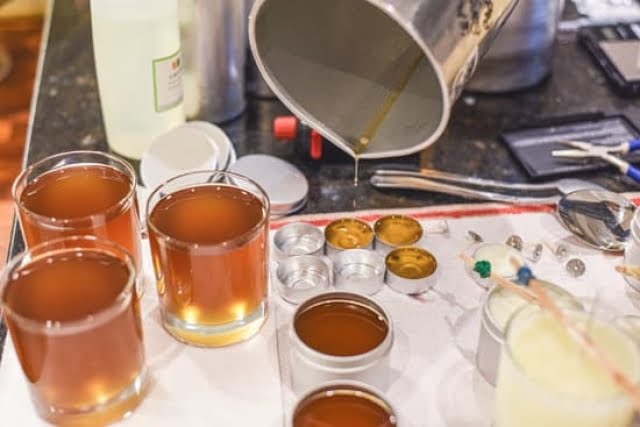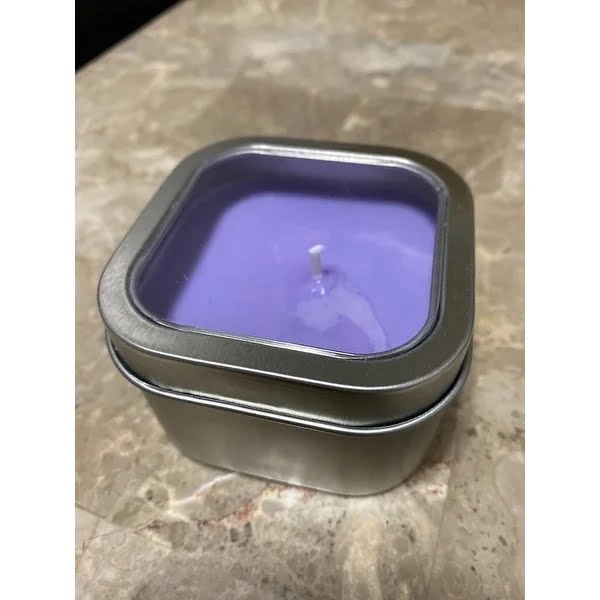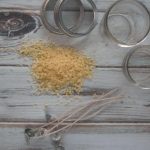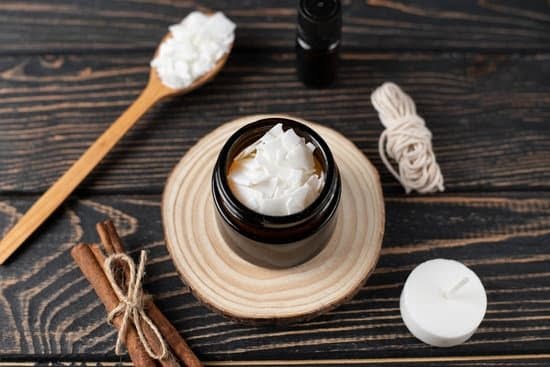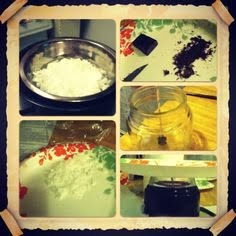Introduction- What Are Natural Candle Making Scents?
Natural candle making scents are fragrances that can be used to make candles which come from nature, rather than being chemically produced. These scents can come from a variety of sources, such as flowers, fruits, herbs and woods. Candle makers often prefer to use these natural ingredients over synthetic ones as they create a more natural and pleasing aroma when burned. Many of the fragrant essential oils derived from these sources offer unique scents which can be highly sought after in the candle making industry. Examples include lavender from the flower, lemongrass from the herb and cedarwood from wood chips.
Types of Natural Scents available for Candle Making
The variety of scents available for use in natural candle making is vast. For herbal and earthy aromas, lavender, rosemary, lemongrass, and sandalwood essential oils work wonderfully. If you’re looking for a warm and cozy scent, try popular combinations including patchouli and cinnamon bark or balsam fir and clove bud essential oils. To get a more fresh, citrusy smell for your home use fragrances such as grapefruit and frankincense or orange blossom and cedarwood oil. Finally, if you’re in the mood to relax and take a whiff of the ocean breeze then try out a mix of marine notes with eucalyptus or driftwood near the shore scents featuring vetiver and lime. There are truly endless options when it comes to pairing together an inviting aroma in order to make your own unique blend!
Popular Natural Scents and How to Identify Them
One of the most popular natural scents for candle making is lavender, which has a floral, herbaceous aroma and is most commonly associated with relaxation. Rosemary can also be used to create calming aromas in candles and provides an earthy or slightly lemony scent. For a fresher, more invigorating natural scent, eucalyptus is often used and carries a strong herbal smell with a hint of menthol. Citrus fragrances such as orange peel or lemon grass can provide a more uplifting aroma and are great for promoting concentration and focus. Finally, herbs like sage, thyme, and mint have been known to help energize and awaken the senses so they are also excellent choices when looking for natural scents for candles. No matter what natural scent you choose for your candle making projects, make sure to always identify it accurately so that you know what type of effect it will have on your senses!
Mixing and Blending Natural Scents for Special Occasions
Natural candles make wonderful gifts or home decorations, and they are a great way to add fragrance to any room. Natural candle making allows one to control flame color, shape, scent, and burning time—all while creating custom blends of scents for special occasions. When it comes to blending essential oils and other natural materials for aroma, there are seemingly endless possibilities. From floral notes like jasmine and lavender to sweet scents like vanilla and ginger, the combinations are virtually limitless.
To create unique combinations that evoke emotion or nostalgia, one should begin with a few single notes that will act as the foundation of the blend. Essential oils such as cedar, lemongrass and frankincense offer grounding characteristics that can be balanced by sweeter aromas like sandalwood or juniper berry. To add an extra bit of zing, spices like cardamom or allspice can be added together with herbs such as rosemary or sage. Citrus notes like mandarin, grapefruit and lemon offer a hint of freshness while floral accents—such as chamomile or jasmine—add soft touches of romanticism. Any scent can be recreated using these combinations depending on individual preferences! Moreover, adding colorant such as activated charcoal turns your candle into a beautiful statement piece in addition to providing subtle ambient scent wherever it is placed in your home or office. With so many options available when it comes to natural candle making scents and blends for special occasions, creativity is easily expressed through this craft!
Working with Essential Oils and Fragrant Oils for Candle Making
Using essential oils and fragrant oils for candle making provides a great opportunity to create a unique and delightful aroma. Candles made with these natural oils will bring positive energy into any space, creating an inviting and relaxing atmosphere. Essential oils are plant-derived compounds that can be used to create powerful aromas and add a special element of therapeutic healing properties such as relief from stress, improved focus or increased energy. Fragrant oils are synthetically produced chemicals that are one hundred times more potent than their natural counterparts and make great scents for those wanting bolder aroma profiles. It is important to note that the use of either of these oil types should not exceed ten percent of the wax in the candle to avoid burning risks. When combined with other natural ingredients like beeswax or soy wax, they create clean burning candles with beautiful scents that last long after they’ve been extinguished. Combined correctly, different essential and fragrant oils can also be used together successfully, allowing you to create unlimited combinations until you settle on the perfect scent!
Different Ways to Use Natural Scent Oils for Candle Making
Using natural scent oils for candle making can help create unique and unique scents that will have people wondering where you acquired them. One of the easiest ways to incorporate natural scent oils into your candle-making projects is to add a few drops of an essential oil to your wax before it cools. Additionally, these oils can be blended together in creative combinations to make your own custom aromas. Alternatively, the scent could be added after the candle is finished by melting the wax at the top edge of the candle and dripping or dripping a few drops on it. This technique should only be used with small candles since using too much oil may cause burning upon pouring and lighting. Finally, adding fragrance chips allows you regularly add scent as desired without having to worry about burning or melting your candles. Fragrance chips are small pieces of soap with pre-infused aromas that can just be added directly into your wax mixtures giving it an extra layer of intensity without any hassle or extra time involved in measuring out individual fragrance amounts manually.
Creating Unique Candle Scents with Natural Ingredients
Creating unique candle scents with natural ingredients is a fun way to freshen up any environment. Experimenting with different combinations of essential oils and fruits, herbs, and spices can lead to an infinite number of possibilities. There are some base scents used in creating these unique candles. Popular combinations used include floral like lavender and geranium, citrus such as lemon and orange, woodsy like cedarwood or spruce, earthy like patchouli or sandalwood, and spicy like cinnamon or nutmeg. Fruits such as apple or strawberry can also be added for a sweet twist on your candles. Additions of herbs like rosemary, thyme or basil can add herbal notes that balance the other ingredients perfectly. Once you have decided which theme you want to explore when creating your unique blend of natural decor, the next step is selecting the base wax for your candle. Soy wax is popular due to its sustainability but beeswax may work better if you’re looking to achieve a special texture or color for your candle creation. For aromatherapy benefits as well as delicate fragrances in the home, a few drops of essential oil should be sufficient when added with other naturally derived ingredients. To create your own signature scent, carefully choose contrasting yet complimentary ingredients by taking into account their varying levels of intensity. This will ensure that the subtle hints from one can become highlighted amongst others without overwhelming it entirely. With proper knowledge and skillful experimentation natural candle making could easily turn into a profitable hobby for those motivated enough to pursue it!
Troubleshooting Common Problems with Natural Candle Making Scents
One of the most common problems when making candles with natural scents is achieving a strong enough aroma for the flame to disperse. Due to the delicate nature of some essential oils and fragrances, it can be difficult to get them hot enough for good diffusion. Common solutions include adding more scent to the wax, such as a heavier concentration or higher percentage than you normally use, adjusting your wax temperature, or increasing your fragrance oil mix. Additionally, consider using stronger scented materials in place of weaker materials, such as jasmine instead of white tea or sandalwood over rosewood. You can also consider using pre-blended aromas and mixing them with other fragrances that are suitable for candle making. If none of these methods seem to work consider using a wick booster like Vybar or Stabilo also known as stabilizer, which helps hold a stronger scent trail and boosts burn time when used with natural ingredients . This can be added directly into your wax mixture along with your fragrance oil mix. Lastly always do good research on different brands of scents available and try their sample oils before investing heavily in large quantities all at once.
Additional Tips for Crafting the Perfect Natural Candle
When creating a natural candle, it is important to start with high-quality materials, such as beeswax, soy wax, and coconut oil. These ingredients not only create the best burns, but they also lend themselves to a multitude of natural scents that evoke relaxation and warmth. For example, lavender is widely used for its calming properties, while vanilla adds a sweet aroma.
Using other plants and flowers can also help add unique scent profiles to candles. Items like jasmine, geraniums and rose petals are known for their potent aromas and can be added right into the melted wax or as dried materials laid in layers at the bottom of candle molds. Botanical herbs like cinnamon bark, lemongrass and rosemary also provide great scents when used in tealights or soy votives.
To ensure that your natural candle has a strong scent throw – meaning when lit it fills up an area – it is important to use fragrance oils that have been specifically made for candle crafting (signified by their flashpoint). This will guarantee that when you light your creations up, the burning process will not compromise any of the components found in essential oils, which makes them unsuitable for using with candles in general. Additionally, you can enhance your recipe by adding colorants meant specially for candle making that won’t release any harmful toxins into the air when lit up. Last but not least make sure not to mix too many scents together all at once as this will water down the overall smell instead of enhancing it!
Conclusion
Making natural scented candles can be a great way to reduce the use of toxic chemicals in the home and benefit the environment as well. Natural candle making scents avoid filling your space with synthetic fragrances, which often contain harmful compounds that can trigger allergic reactions and asthma. Moreover, using natural ingredients to scent candles is far more sustainable than purchasing manufactured fragrance oils. Many people also find that natural aromas are more calming and help to promote better mental clarity and wellbeing. Furthermore, the use of all-natural materials for candle making can also reduce your carbon footprint by eliminating the use of plastics and chemical waste from mass-produced items. Lastly, creating your own all-natural scent candles demonstrates an act of self-care, reminding you that quality matters over quantity and that you possess the power to create something beautiful with sustainable ingredients.

Welcome to my candle making blog! In this blog, I will be sharing my tips and tricks for making candles. I will also be sharing some of my favorite recipes.

